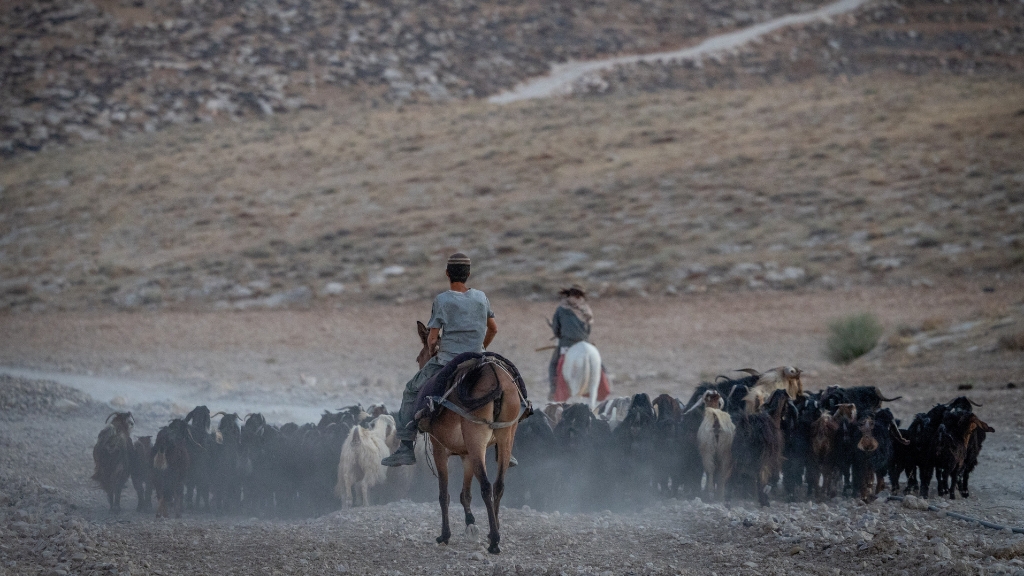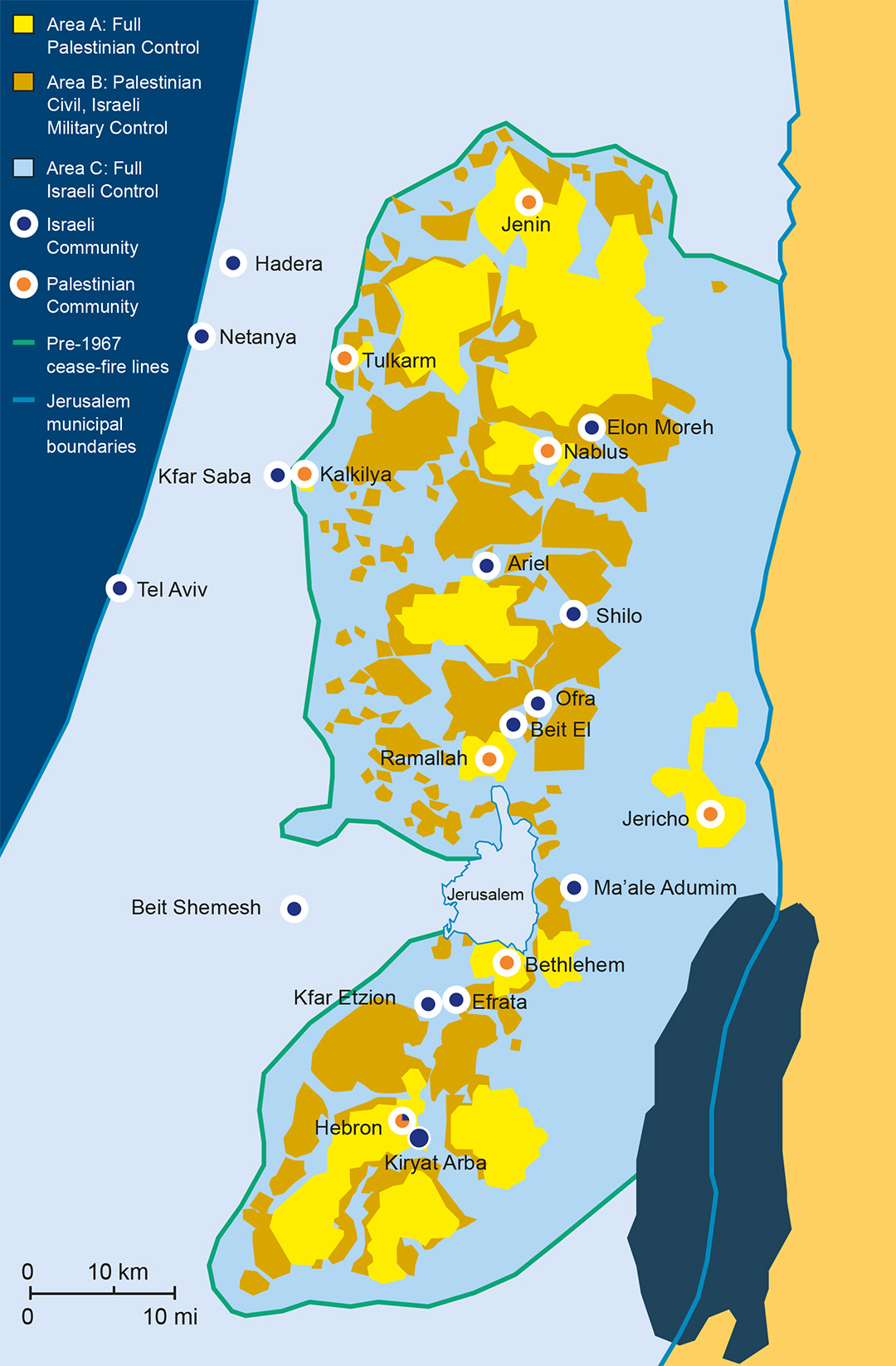The Jewish People and Israel’s Heartland
“Judea and Samaria have since ancient times constituted the biblical heartland of Israel. These small territories—5500 square kilometers in total— are the spine of the land, bounded on the east by the Jordan Valley and River and on the west by Israel’s coastal plain and the Mediterranean Sea. Jerusalem in the center serves as the bridge between Judea to its south and Samaria to its north. It is not widely known but Jews have lived in this region in an unbroken chain of residence from biblical times until today.
The major battles of the Hasmoneans— approximately 165 BCE—were fought in this area. Even after the destruction of the Second Temple in the year 70 CE and the subsequent exile of most Jews from Israel, a remnant always remained, especially in Jerusalem, Hebron in Judea and various towns in Samaria. In medieval times, major Jewish centers were established. In the late 15th century, one rabbinic luminary, Rabbi Ovadia of Bertinoro, left his hometown in Italy, ascended to Jerusalem and soon became the rabbinic leader in Hebron. Pilgrimages to the holy sites—the Tombs of the Patriarchs in Hebron, Joseph’s tomb in Schechem—were common, notwithstanding that Jews routinely suffered from the predations of the Crusaders and then Muslim rulers. Muslims barred Jews from entering the Tomb of the Patriarchs in 1267; that ban remained in effect until Hebron was liberated by Israel in 1967.
From 1517-1917, Judea and Samaria were governed by the Ottoman Empire, where it was deemed a provincial backwater of little importance. Jews dwelled there as second-class non-citizens but remained faithful to the land. No Arab entity ever exercised sovereignty there or brought its barren soil to life. The land began to bloom when Jews returned in larger numbers in the 18th and 19th centuries.
This small region was promised to the Zionist Organisation as part of the Jewish homeland envisioned by the 1917 Balfour Declaration. But that promise was repudiated, mainly due to power politics and a lingering distaste among some Western politicians for the Jewish national movement. The United Nations Partition Resolution of 1947 granted Judea and Samaria to a putative Arab state, wrenching” “the Jewish heartland of Israel away from the Jewish people. This, too, was never implemented due to the Arab rejection of the plan and their invasion of the nascent State of Israel on 15 May 1948.
Thus, Judea and Samaria were misnamed the ‘West Bank’ in 1950 after Transjordan illegally seized it during Israel’s 1948 War of Independence. That country even changed its name from ‘Transjordan’ (’across the Jordan River’) to ‘Jordan’ to reflect its new holdings on its western bank. When Jordan renounced its claim over this land in 1988 it nevertheless did not revert to its original name.
While Jordan controlled Judea, Samaria, and eastern Jerusalem from 1948 to 1967, it brutally expelled all Jews who had lived there since antiquity, massacring hundreds in the process. Jordan also barred Jews from visiting all Jewish holy sites including in Jerusalem from 1948 to 1967. During the years of Jordanian occupation, Jordan made no effort to create a Palestinian state nor was there even a demand for one. Calls for a Palestinian state arose only when Israel conquered Judea and Samaria after Jordan attacked Israel during the 1967 Six Day War. Indeed, the Palestine Liberation Organisation was founded in 1964, three years before Israel possessed Judea and Samaria, begging the question what was the PLO trying to ‘liberate’ in 1964? That the PLO was trying to eradicate Israel before there were any settlements in Judea and Samaria defines the essence of the conflict until today.
More than 500,000 Jews live today in Judea and Samaria in roughly 150 different communities. In Jerusalem, Israel’s capital city, 250,000 Jews reside in areas formerly occupied by Jordan. These communities are mostly but not entirely religiously oriented. Jews are drawn to live in the heartland of Israel by its expanse, its beautiful vistas and historical resonance, the quality of life the areas afford, and to fully participate in fulfilling the biblical destiny of Israel.
Jews have returned to live in places where our ancestors dwelled—in Hebron, in Shiloh where the Tabernacle stood for 369 years, in Bethel and Efrata, and numerous other places.
This is in fulfilment of Jeremiah’s prophecy (31:4), “you will again plant vineyards in the mountains of Samaria, the planters shall plant and enjoy it,” has literally been fulfilled.
In the historic confrontation between Menachem Begin and US President Jimmy Carter in 1977 in which” “Carter demanded a halt to settlement construction, Begin retorted: “There are many towns named Hebron in the United States, and many named Bethel and Shiloh… Imagine a governor of a state declaring that all American citizens except Jews could go live in these towns. Can we be expected, as the government of Israel, to prevent a Jew from establishing his home in the original Bethel? In the original Shiloh? … This is a great moral issue. We cannot tell Jews in their own land that they cannot settle in Shiloh.”
There is nothing more natural than Jews returning to Judea—from which the word ‘Jew’ derives!”






